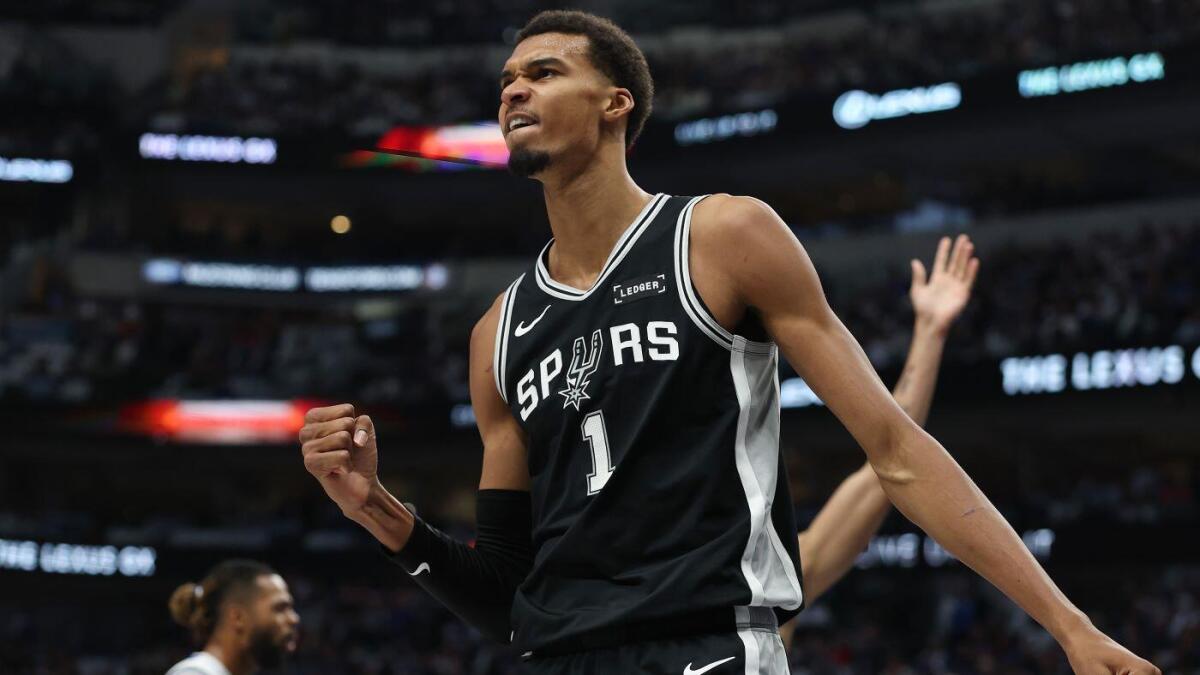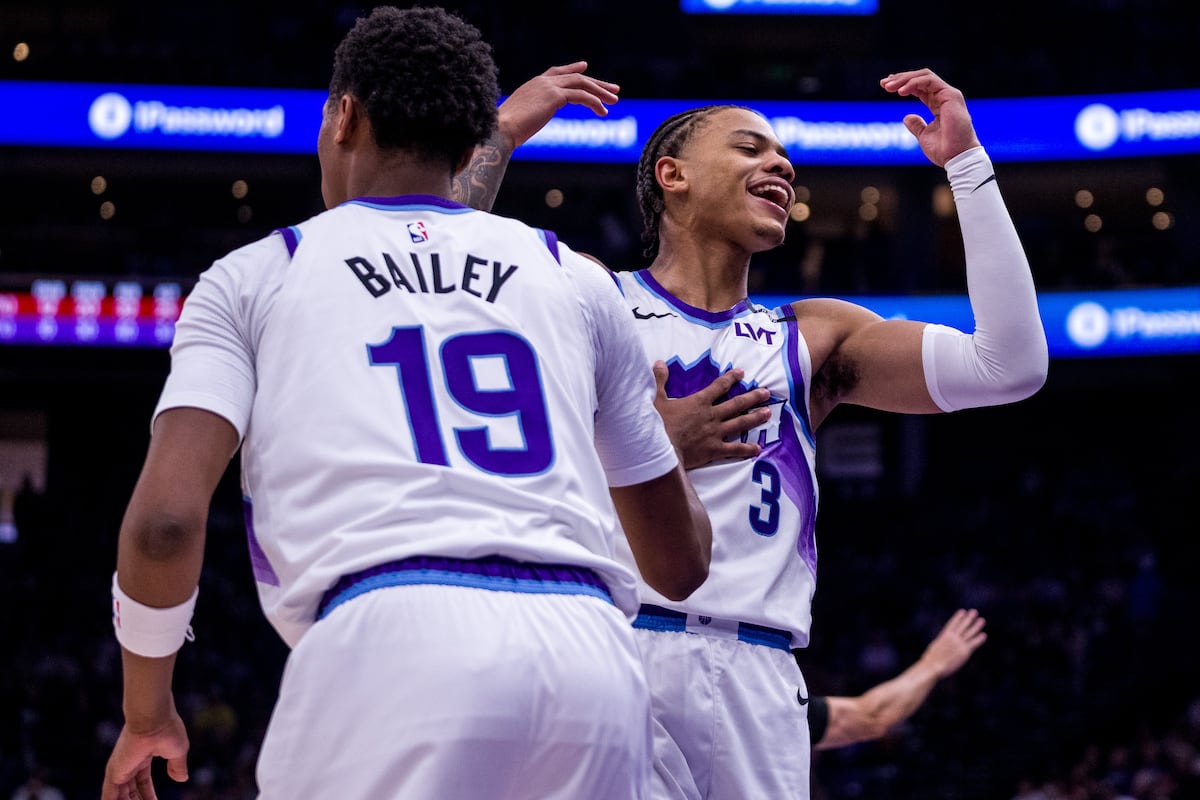NEW YORK — The New York Knicks and Cleveland Cavaliers faced off on Wednesday night as the two betting favorites to win the Eastern Conference. Only, the two teams that stepped onto the court at Madison Square Garden weren’t close to the iterations that either team expects to put on the court come playoff time.
Between the two teams, seven key role players were listed as at least questionable on the pre-game injury report, and when the opening night festivities began, the Cavaliers had ruled out starters Darius Garland (toe), Max Strus (Jones fracture), and DeAndre Hunter (knee) while the Knicks had ruled out starting center Mitchell Robinson (ankle) and top reserve Josh Hart (back).
With so many changes needed for the first game of the 2025-26 NBA season, the outcome of the game seemed to hinge on which team adjusted more successfully. The answer, early on, was the Knicks, who took a 17-point lead in the middle of the second quarter and went into the half up by 15. However, the Knicks’ tendency to come out for their third quarter on their back foot carried over from last season, and they watched as Donovan Mitchell scored 21 points in the quarter to pull the Cavaliers into an 87-87 tie.
In the fourth quarter, the Knicks’ bench, which they’ve spent much of the offseason insisting would be a deeper and more impactful unit, stepped up in a big way. Deuce McBride hit a big three-pointer. A slashing Jordan Clarkson found Karl Anthony Towns for a big dunk. McBride knocked the ball away from Mitchell and found Clarkson up ahead for a dunk, and the Knicks had quickly rebuilt a 101-89 lead that they would not relinquish despite several last-ditch efforts by the Cavaliers.
While it was just one win and one against a short-handed opponent, it was a bit of a statement win for the Knicks. This is not going to be the same team we saw take the court last season. This team is deeper. It plays faster. It defends with more aggression. When the players get more comfortable in the system and get Hart and Robinson back in the fold, this is absolutely a squad that can contend for an NBA title.
“Our expectations are extremely high,” said Knicks new head coach Mike Brown, “but we’re not going to get ahead of ourselves. It’s one game. We feel like, as the season goes along, we’re going to get better. We won the game and we had some good moments, but we don’t feel like we’re anywhere near what we’re capable of, and that’s what makes it exciting.”
Here are three of the biggest takeaways from the game.
These are not Tom Thibodeau’s New York Knicks
Mike Brown made a statement right from the opening tip by starting Ariel Hukporti at center and keeping Karl-Anthony Towns at power forward. The Knicks had experimented with two big man lineups in the postseason last year, and Brown had planned to start Mitchell Robinson alongside Towns this year to take advantage of Towns’ shooting ability and also cover up his lack of interior defense. With Robinson out, Brown could have easily pivoted to starting Deuce McBride and moving Towns back to center, but he stuck by his pre-season claim that he would replace starters with similar types if somebody was not able to suit up.
However, Hukporti wasn’t the only Knicks bench player to step into a more meaningful role. Ten Knicks players played at least 10 minutes on the night, and Coach Brown wound up getting 11 players on the court during the game. That’s a stark change from last season under Tom Thibodeau, where the Knicks relied on their core seven or eight players for the vast majority of the minutes.
“I don’t know if I’ll play 11 guys every night,” joked Brown, “but we’d like to play as many as we can. We want everybody to be ready in case their name is called at any time.”
On the night, the Knicks got 35 points from their bench, including 15 from Deuce McBride and nine from Landry Shamet. Tyler Kolek also played 14 minutes off the bench, adding seven points and two assists while showing impressive floor awareness to create good looks for his teammates.
But, in addition to the increased reliance on their depth, the Knicks displayed a few other stark changes from the team that we saw last year.
For starters, the Knicks want to play fast. They grabbed rebounds and tried to hit their outlets as quickly as possible. They only scored 16 fastbreak points in the game, but they pushed the tempo far more than they did last year. They also accomplished that by attacking the lane and kicking out for open three-point looks, known as “spray” passes from the paint to the perimeter. This is a central focus of Mike Brown’s offense, but it was not something the Knicks did often last year.
“We had 21 sprays,” recounted Brown after the game. “We want to get to at least 20 a game where we touch that paint because anytime you touch paint, teams have got to protect the paint. But now those wide-open shots happen. I think we can even generate more. I think we can generate 25-27 a game because we have that many players, in my opinion, that are capable of shooting the ball, snap-driving, and touching the paint and moving it on when they need to off two feet.”
The Knicks also picked up full-court defensively on the majority of possessions tonight, and it brought an aggression to their defense that they lacked at times last year. “You want to turn them,” explained forward Mikail Bridges about the goal of playing full-court defense. “You want to get them out of the offense a little bit, make them start their offense a little bit later. But also, I think it gives confidence to the four guys who are watching. Like, okay, I see him up there locked in…so I think that kind of sets the tone, gets everybody dialed in and engaged. I think that’s everything.”
Donovan Mitchell needs freedom and some scoring help
While the Knicks may have showcased a deeper team on Wednesday, the Cavs took a bit of a different approach. With three key players sidelined and five new players in their rotation, Cleveland leaned heavily on Donovan Mitchell to carry them. The All-Star guard led all scorers with 31 points on 12-of-25 shooting (5-of-10 from beyond the arc) while adding five assists, two rebounds, and two steals. Yet, only two other Cavs players took more than 10 shots in the game, and one of them, Sam Merrill, needed a couple of late-game three-point heaves to get there.
Mitchell is obviously an electric scorer capable of taking over the game at any point, but he struggled on Wednesday when trying to facilitate an offense with so many new faces. He wasn’t as assertive in the first half, trying to get his teammates involved and completing passes within the flow of the offense, before deciding to look for his own shot aggressively in the third quarter. Yet, after scoring over a third of his points in one quarter, the Knicks countered by sending different, rested defenders at him throughout the fourth quarter. The result was that Mitchell only scored two points in the frame, both of them coming on free throw attempts.
Evan Mobley was solid alongside Mitchell, scoring 22 points on 8-of-18 from the field to go along with eight rebounds, three assists, and three steals, and Sam Merrill stepped up in his start with 19 points, primarily thanks to shooting 5-of-10 from three, but the Cavs will need other players to rise to the occasion and take on some of the offensive burden while Darius Garland is sidelined. DeAndre Hunter could be that guy, and the team may have felt that Lonzo Ball could do it, but he really struggled in his first game with the Cavs.
The 27-year-old former 2nd overall pick was signed in the offseason and expected to fill the point guard role until Darius Garland came back from injury. Instead, Cavaliers head coach Kenny Atkinson decided to go with Merrill starting at guard and Jaylon Tyson in the lineup at forward in place of DeAndre Hunter. Ball was the first player off the bench for Cleveland but finished with three points on 1-for-7 shooting, all from beyond the arc. He did add six assists, which is helpful, but he’s going to need to be a more efficient and effective scorer if he’s going to play 23-27 minutes a game off the bench.
This is no longer just Jalen Brunson’s offense
For much of the past two seasons, it has seemed like the Knicks’ primary offense was having Jalen Brunson slowly dribble the ball up the court and go to work on his defender while the rest of the Knicks stood on the perimeter or set him a screen. This is no longer that kind of offense.
Brunson spent a lot of time off the ball on Wednesday with OG Anunoby, Mikail Bridges, Deuce McBride, and Tyler Kolek all taking turns acting as a more traditional point guard. That’s all part of a larger plan under Mike Brown to utilize the strengths of a team that he feels has plenty of players who can create and attack the rim to set up those “spray” opportunities that Brown spoke about.
Having Brunson off the ball more meant that Bridges and Anunoby were asked to create more offense, which made them more assertive and aggressive than we saw from them last year. As a result, Anunoby led the Knicks with 24 points on 9-of-17 shooting while adding 14 rebounds, two assists, and three steals. Bridges, meanwhile, led the team with six assists while also adding 16 points, five rebounds, three steals, and two blocks. The Knicks had five players score at least 15 points, including Brunson, who had 23 points, five assists, and four rebounds despite shooting just 5-of-18 from the field and 1-of-9 from three. None of which he attributes to not being as ball-dominant on offense as he was last year.
“I’m very comfortable shooting the ball regardless of where I shoot the ball. I mean, I wasn’t comfortable tonight with 5-of-18, but I have a comfort level that I’m very confident with.”
That was backed up by his teammates, who don’t see any reason why Brunson can’t succeed in an off-ball role.
“JB can play anywhere on the court,” added Bridges. “Even him, like his size, he can post up guys too. So, like, he could do about anything… I think everybody on our team is talented and can do a lot of things. I think all of us can dribble drive, make the right read, and, you know, try to do whatever it takes.”
Through one night that proved to be true, even without two key pieces in their rotation. If they can continue to spread the ball around and allow their other highly paid playmakers to initiate the offense, the Knicks are going to be a lot harder to stop in the postseason than they were last year when teams sent aggressive double teams at Brunson the second he crossed halfcourt. This version of the Knicks plays too fast and shares the ball too much for that to stop them.
“We have a long way to go,” cautioned Brunson. “We have a lot to learn about how to get better and a lot of details to pay attention to. This is game one. It’s not on us to speculate about what’s gonna happen down the road. We’re just gonna focus on game two.”


